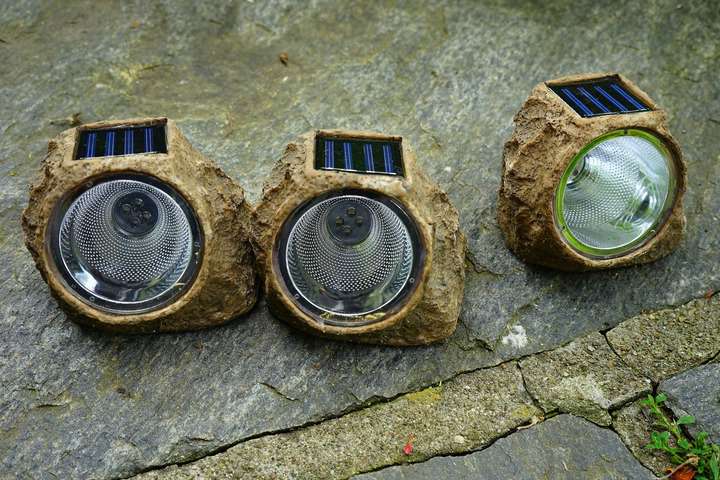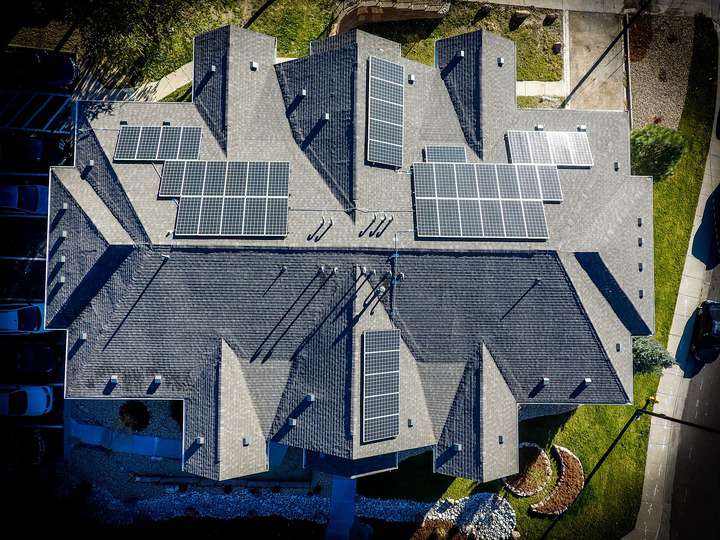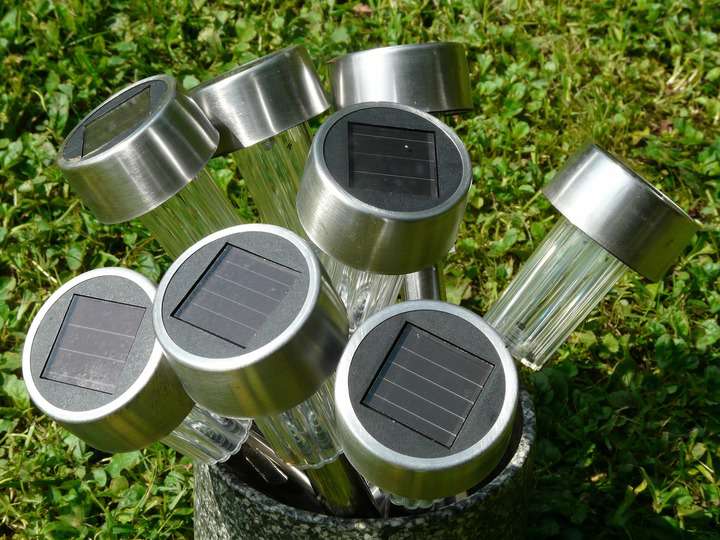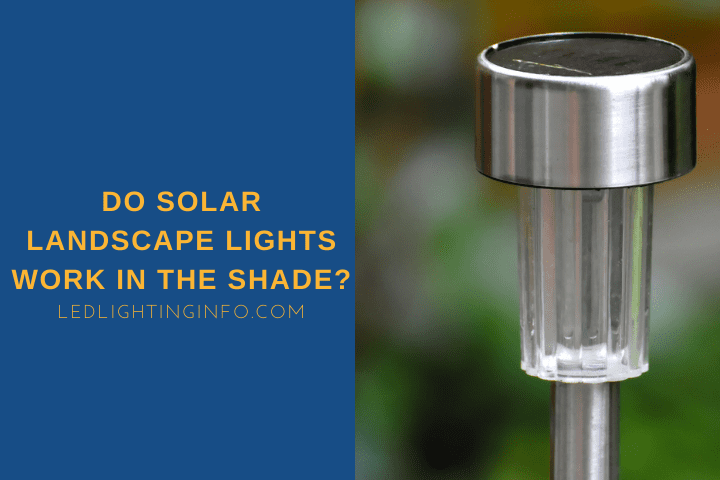Solar lights are a great way to illuminate your garden without worrying about wiring.
There are no trenches to dig or cables to lay, just set the lights up, and they should work.
But they still need that power source – the giant burning ball of flame in the sky.
What happens if your new solar lighting doesn’t actually face the sun for most of the day?
Can solar lights work if they spend most of their time in the shade?
Solar landscape lights will work if they get some light from the sun, even if they spend most of their day in the shade. They just may not work too long at night as there won’t be much charge. Artificial lights can sometimes work to charge landscape lights.
In this article I’ll explain in a bit more detail:
- How many hours solar lights need to charge up
- Whether solar lights will charge if they’re permanently in the shade
- How artificial lights may or may not charge your landscaping lights
How Many Hours Of Sun Do Solar Lights Need?

This all depends on the individual light and the battery that it has included. There are various different types of landscaping light, of varying luminosity.
The design and size of the light itself will also impact how large a battery it can hold.
Unfortunately, the easiest way to work out how many hours of sun your solar lights need is to read the manual.
That’ll give you the manufacturer’s exact recommendations.
Most lights will give you the total charging time either on the packaging or the website product description.
If you can’t find the information, then there’s a way you can work it out.
This won’t necessarily be exact for every light because different types of solar batteries charge in different ways.
Some are more efficient than others. But this will give you an estimate.
The information you need to know upfront is the wattage of the panel on the light, the number of hours of sunlight it will get, and then the voltage and amp-hours of the battery.
Let’s use this pack of solar spotlights as an example (Amazon).
Start by working out the watt-hours. The solar panel is 5 Watts, so let’s assume you have 5 hours of sunlight.
Multiply these together, and then multiply by 0.9.
We do this because 90% efficiency is the best from solar panels. Sometimes it’s lower, but that depends on the type.
So, 5 multiplied by 5 is 25, multiplied by 0.9 is 22.5 Watt-hours. So it’ll generate 22.5 Watts over the 5 hours, and you can therefore work out that it’ll charge at 22.5/5 = 4.5 Watts per Hour.
We need to know how much the battery requires to be fully charged.
To work out Watt-hours, you can multiply the voltage by the Amp Hours. For example, these lights have a 12V battery that holds 4000 mAh (Milliamp Hours), the same as 4 Amp Hours.
12 multiplied by 4 is 48. So, to fully charge the battery, you’re going to need 48/4.5 = 10.6 hours.
That’s for a full charge from dead, so you may not need this every day.
Will Solar Lights Charge In The Shade?

The charge time of lights is based on the solar panel enjoying the benefits of direct sunlight. But that might not always be possible.
You may have a home that blocks the sun during some hours of the day, so it doesn’t shine into your garden.
Or maybe you live somewhere where sunny, cloud-free days are a rarity.
Don’t worry; solar lights don’t require full scorching sunlight to work. But they do need it to work at their best.
There’s no single answer for how efficient solar panels are in shaded areas. Instead, it’ll depend on how shaded they are, the quality of the panel, and other factors.
But assuming daylight under clouds, many solar panels could be as low as 20-30% efficient. Which would mean they’d need to charge for around 4-5 times as long.
They’ll work, but you might not have lights that last as long in the evening.
Can Solar Lights Charge From Artificial Lights?

The term ‘solar’ light is a misnomer because it’s any type of light that will charge the panel, not exclusively the sun.
However, there is no artificial light that you could have in your home that comes close to the power generated by a real star.
The sun produces around 1,000 Watts of energy per square meter as a guide. Artificial lights work with much lower wattages and emit a much lower luminosity.
Plus, many older artificial lights aren’t directional, so their much lower power is also being dispersed in every direction.
Even LED bulbs, which are directional, offer a tiny fraction of the power needed. As a guide, a 15-minute charge from the sun is the same as around 8-10 hours of LED time.
You can read more on LEDs charging solar panels here, but ultimately it’s not an effective solution.
Technically yes, solar lights will charge from artificial lights. But not in a viable way.
If you’re trying to find a solution, one thing to consider is that some landscape lighting manufacturers will produce landscape lighting that will work off an alternative power source.
USB is one option – you could connect a power bank and charge the light from that instead.
If you plan to do this, choose a power bank rated for outdoor use (some are designed for camping).
Make sure you only do it when the weather is dry.
Then, all you’d need to do is bring the power bank indoors each day and charge it from the mains.
It’s not the ideal answer, but it’s a workaround.
If you’re concerned about whether your garden or environment will work with solar lights, the best solution is to avoid solar altogether and install mains-powered lighting.
It’s more effort and cost, but it’s guaranteed to then work.
Related: Do Solar Landscape Lights Charge In Winter?
Final Words
For solar lights to work as they should, they often need a lot of direct sunlight, although it depends on how long you want the lights to work.
If you only plan to switch them for 2-3 hours a night, then it might be less of a concern.
Solar is very clever, but it’s not the most reliable, especially if you live cloudy somewhere more often than not.
Solar landscaping lights can be relatively low cost, so maybe try a couple, and if they don’t work, you’ll know you need to opt for mains power instead.
It’s more of an investment, but you get guaranteed lighting.
Any tips for my readers on the best solar lighting setups for your garden?
Maybe you’ve been bitten after finding out they just weren’t suitable for your home?

